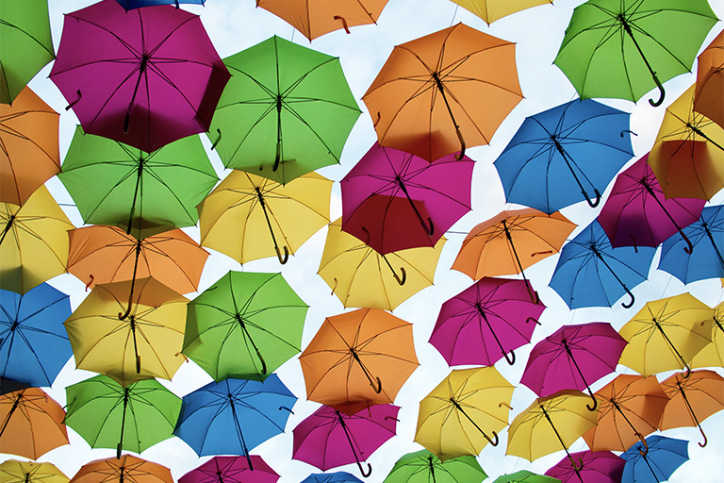
Facebook Users Like Official Pages
The average user on Facebook “likes” 4-6 pages a month and has an average of 130 friends (Facebook). This statistic presents an enormous opportunity to companies who want to connect with their customers. Why? A customer is opting in to see, like and comment on a company’s wall posts in the user’s sacred News Feed, which more or less serves as their personal stream of communication based on what and who they want to hear from. Entering into this sacred stream of information is pretty powerful—at its essence, it’s the heart of Facebook and where people are connecting and engaging with their family and friends. As a business, you have an opportunity to enter this prime real estate and go to where your customers are spending an exuberant amount of time (remember the average Facebook user spends 45 minutes a day on Facebook).
When Facebook users like a page, it presents a chance for that brand to engage with its customers and build stronger relationships, in turn growing more loyal customers (click here for research that supports this statement). Considering your average user is only connecting with 4-6 pages a month, that’s less competition for your company when vying for that prime News Feed visibility. The action to “like” your brand is significant. Out of the millions of Facebook Pages that exist, you made it as one of four for the month. Congrats—that’s a feat. Don’t waste this opportunity to engage with your customers.
Concern for Facebook Like Saturation
But what happens when, over the course of a year, a user’s number of likes has grown from 4 to potentially 46? That’s a lot more competition in that user’s News Feed that you now have to take into consideration. Is it something to be worried about? Will Facebook marketing become less effective as “liking” a Page becomes more prevalent among Facebook users?
It’s a legitimate concern. As someone who is part of the Facebook economy and has built a business around Facebook Pages, it’s an important question for me as much as it is for the readers of this blog. From a personal standpoint, I’m also not your average Facebook user. I’ve connected with over 800 pages on Facebook (mostly for market research of course). Has page number 744 wasted its time in recruiting me? Is it just another link lost in my 800+ list of pages in my profile?
If page number 744 that I “liked” understands the benefits of Facebook, then the answer is “no.” No, page saturation isn’t something to worry about for the time being or near future; however, it does have implications and Facebook marketers should be aware of them. Here are some thoughts as to why you shouldn’t be worried:
10 Reasons How Brands Benefit from Pages (without needing to worry about like saturation)
1. Every user on Facebook experiences his or her News Feed differently, depending on whether he or she prefers the Top News or Most Recent News.
2. If a user prefers Most Recent News, then your Wall Posts are guaranteed to be visible here. As a person connects with more Pages and Friends who are active on Facebook, the Wall Posts on Most Recent won’t have as long of a shelf life, and they will be pushed farther down the page faster.
3. If a user prefers Top News, then your Wall Posts potentially have a chance to be visible here regardless of the amount of friends or Pages a user has connected with. The Top News relies on an algorithm to determine what Wall Posts show up in this stream. Many things factor into this algorithm, but the short of it is, a user is telling Facebook what is most relevant to them based on their activity on the site; therefore, their Top News is the most relevant news to that person. This means that if a Page can actively engage and sustain being relevant to a user who’s liked it, then the Page’s Wall Posts will have a higher likelihood of having Most Recent News visibility.
4. You can still target Facebook Ads to “fans” …even if they’ve hidden your page from either of their News Feeds!
5. You can still target Facebook Ads to friends of your currents “fans”.
6. You can still send “fans” Updates that show up in their message area (which has some value but pales in comparison to News Feed visibility).
7. When a user clicks “like,” that action is broadcasted to that user’s friends. A page is still benefitting from Facebook’s inherently viral platform and that user’s social graph.
8. Having a large number of “likes” on a page is still useful, even if not all of the fans see the wall posts from that page in their personal Top News. Social proof and the bandwagon effect is still used to the Page’s advantage (I may not see the Wall Street Journal’s posts anymore, but when a friend of mine visits their website and sees the Like Box, my picture will be there showing my endorsement of the Wall Steet Journal and indirectly affecting my friends’ decision-making process in evaluating the page and consuming content. Even if someone who didn’t have any friends connected to the Wall Street Journal, that person would see thousands of people endorsing the brand through the total number of Page likes).
9. Even if a user never even “likes” your page, a company can still benefit from having a Facebook presence. Refer to point number 7 to understand the bandwagon effect. There are other benefits too:
a. People can still gather information in the same way that 2% of Yelp users contribute content, yet the majority of the site’s traffic consumes it. I may not “like” a page titled “Tampons for Strong Women,” but that doesn’t mean I still won’t use it as a resource.
b. Aside from building a community around your brand, there are other benefits to a Facebook page: it helps send traffic to your website, captures information in forms (users don’t actually have to be connected to you for this), and improves SEO (and what will be more increasingly important: Facebook Search Optimization).
10. A company can also benefit from having a Facebook page as an easier and more manageable way than even a blog to publish fresh content on a regular basis. This content can be featured on the company’s website through the Like Box so the Facebook page still serves an important way to distribute fresh content.
Tune in to the follow-up blog post to determine how to evaluate the effectiveness of your wall posts…are they going out into a black hole, or are they helping your company build a relationship with its customers?
Is there anything you’d add to this list? Let us know!
Post written by Helen Todd aka @helenstravels. To learn more from fbadz.com, connect with us on Facebook!

